Last-Minute NYC Holiday Gift Guide 🎁
We’ve created a holiday gift guide with presents for the intrepid New Yorker that should arrive just in time—


Our recent fun map about the farmhouse that moved from the Upper East Side to Greenwich Village reminded us of all the other buildings in NYC that were literally picked up and relocated. Here’s a list of 9 of these migrants and their stories!
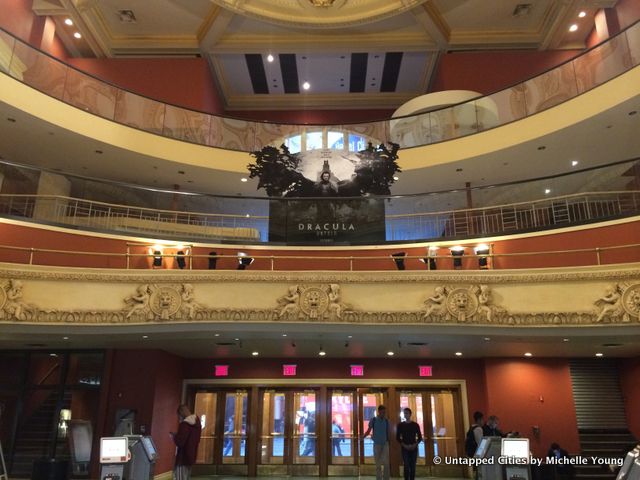
The over-the-top sensory experience along 42nd Street that you experience today was actually part of a concerted renewal project, back when Times Square was known mostly for its seediness and vice. Forest City Ratner, now more well-known for its work at Atlantic Yards (now the rebranded “Pacific Park”), handled the redevelopment with architecture firm Beyer Blinder Belle. The whole Empire Theater (now an AMC) was lifted from its foundation and moved 168 feet westwards in 1997. The 3,700 ton structure, with a Thomas Lamb theater interior, was converted into the entrance way to a new retail complex. It’s hard to imagine that many of these theaters on 42nd Street had become so altered and dilapidated in their evolution from movie theater to grind houses, the original architectural details were only discovered upon renovation. See the historical remnants that can still be found inside the AMC Empire Theater today.
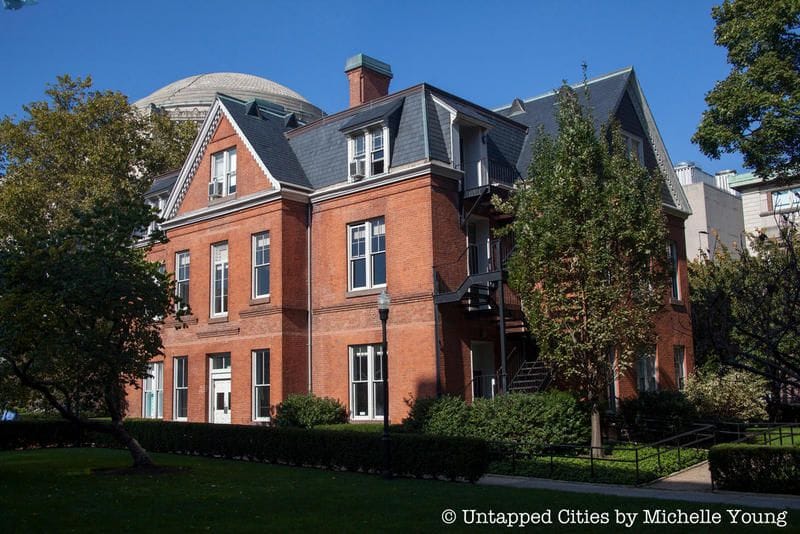
Before Columbia University was located in Morningside Heights, the property was home to the Bloomingdale Asylum. While most of the buildings gradually disappeared as Columbia expanded, one remained. Lovely Buell Hall, home to the Maison Française was moved there from a short distance away. Originally called Macy Villa, the brick building was designed in an architecturally distinctive style by architect Ralph Townsend to house wealthy gentlemen with mental afflictions–making them feel a little more at home. It was moved in 1905.
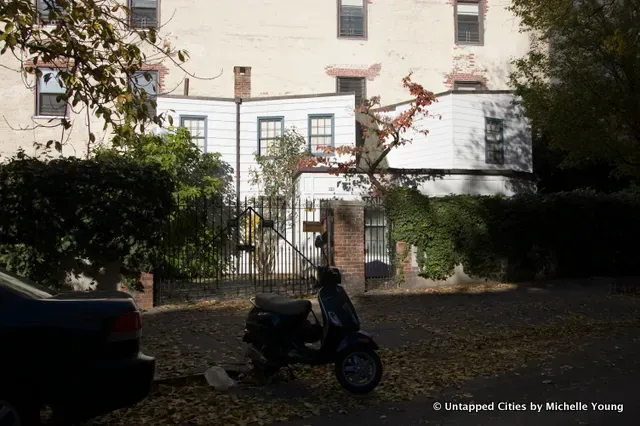
Walking through Greenwich Village, you might mistakenly think this adorable clapboard farmhouse at 121 Charles Street is simply a remnant of a more bucolic era in the Village. But it actually came from the Upper East Side, on 71st Street and York Avenue!
In 1967, the house was moved five miles to this once-vacant lot on Charles Street. The owners, the Bernhards, were saving it from demolition by the Roman Catholic Archdiocese of New York, who owned the land the house was on. Here’s a fun map tracing the move.
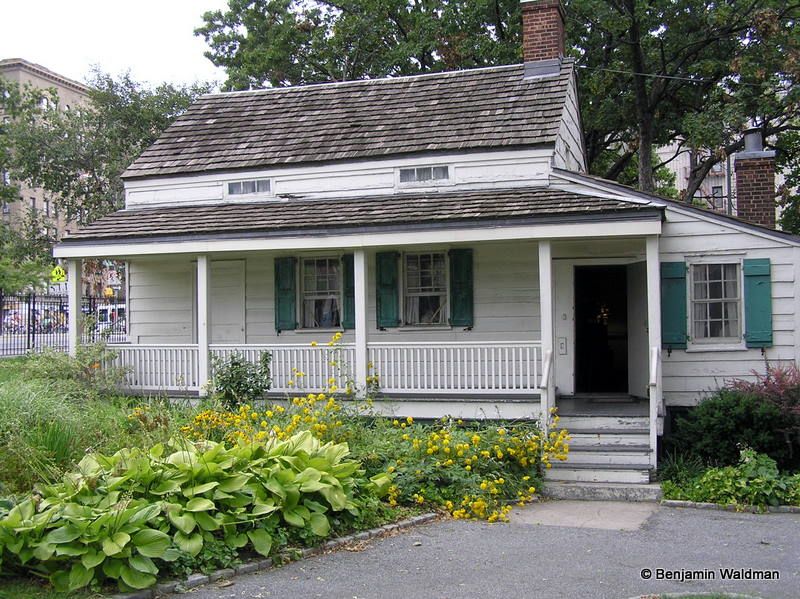
In 1847 Edgar Allan Poe moved out to the Bronx was for the sake of his wife, Virginia Clemm, who had contracted tuberculosis. The Bronx did not provide the miracle that Poe was looking for Virginia died later that year. Two years later, when Poe died under mysterious circumstances, Maria Clemm,Poe’s mother-in-law was left in the house by herself. Unable to afford the rent she sold or gave away many of Poe’s possessions and the furnishings of the house.
Between Poe’s death and 1910, the cottage went through a number of different owners, some of whom hoped to save it from destruction. This protection was achieved when the decision was made to move the cottage to a newly created park. The park, named in honor of Poe, was dedicated in November 1913. Due to its location, the cottage suffered much vandalism over the years but its designation as a New York City landmark in 1966 ensured that it was to remain for future generations.
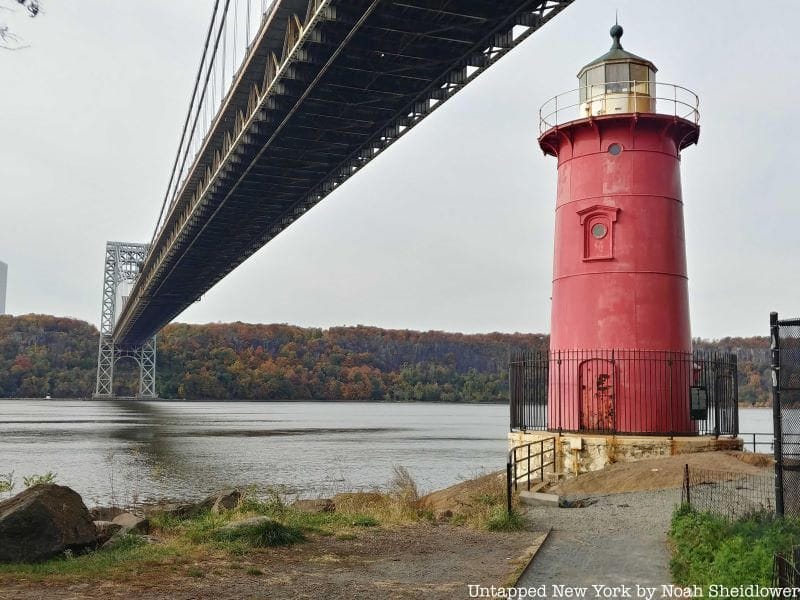
Also called Jeffrey’s Hook Lighthouse, the Little Red Lighthouse is perhaps most well-known as the “protagonist” of The Little Red Lighthouse and the Great Gray Bridge. This 1942 children’s book tells the true story of the George Washington Bridge’s overshadowing of the Little Red Lighthouse. But the 1880 lighthouse originally stood on the coast at Sandy Hook, New Jersey. In 1921, it was moved to Jeffrey’s Hook in northern Manhattan to aid ships in the navigation of the rocky and narrow portion of the Hudson. The George Washington Bridge was completed in 1931 and its bright lights completed overtook those of the Little Red Lighthouse.
A legion of children rallied to save it from destruction, and today, the lighthouse has been restored and relit. Today, it’s run by the New York City Department of Parks and Recreation. You can visit and climb to the top of the tower.
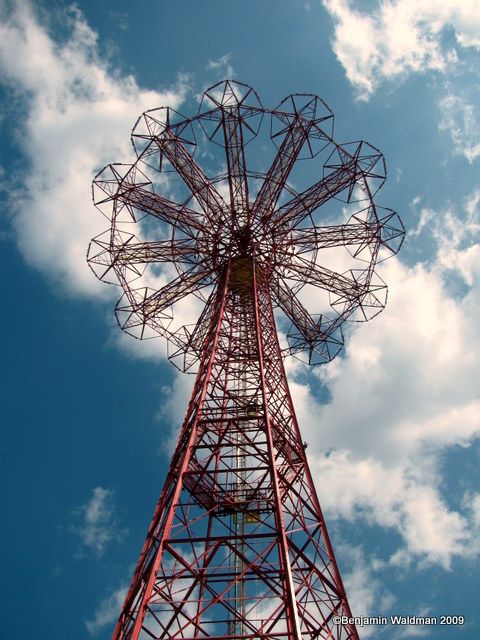
The iconic Parachute Jump at Coney Island was originally built for the 1939 World’s Fair in Flushing Meadows and moved to Coney Island’s Steeplechase amusement park in 1941. The ride and the park closed in 1964, and gradually every park structure has been demolished except for this jump, initially due to cost restrictions. It’s a rather resilient structure, having survived numerous attempts to demolish it and sell it. It was even landmarked in 1977 and then unlandmarked three months later due to structural concerns. It ended up on the National Register of Historic Places in 1980, and re-landmarked by New York City in 1980. Today, the structure is programmed to light up for special occasions.
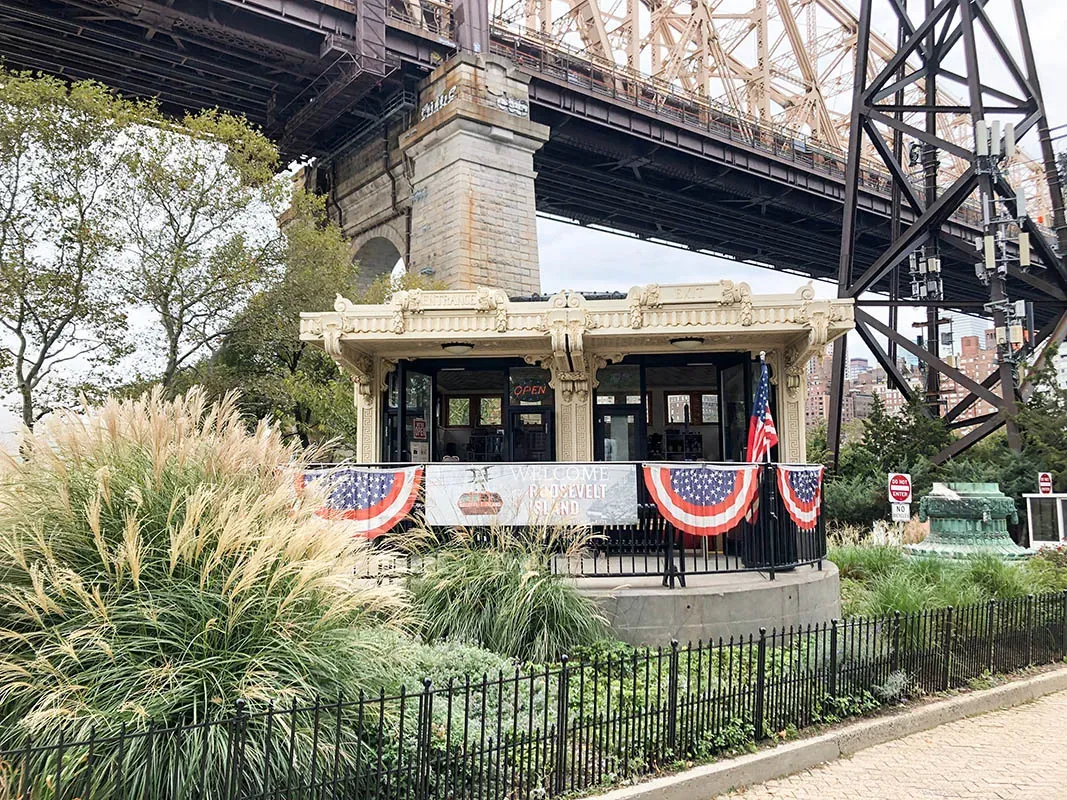
A trolley used to run between Queens and Manhattan over the Queensboro Bridge, with a mid-span stop which would take riders to Roosevelt Island via elevator or stairs. Though the system was phased out in the 1950s, a trolley terminal remained on the Manhattan side of the Queensborough Bridge approach ramp. Cars kept crashing into the deteriorating structure so it was moved to become the entrance of the Brooklyn Children’s Museum in 1970. The 2004 museum renovation didn’t include plans for the renovation so the structure was moved to Roosevelt Island to become the visitors center for the Roosevelt Island Historical Society.
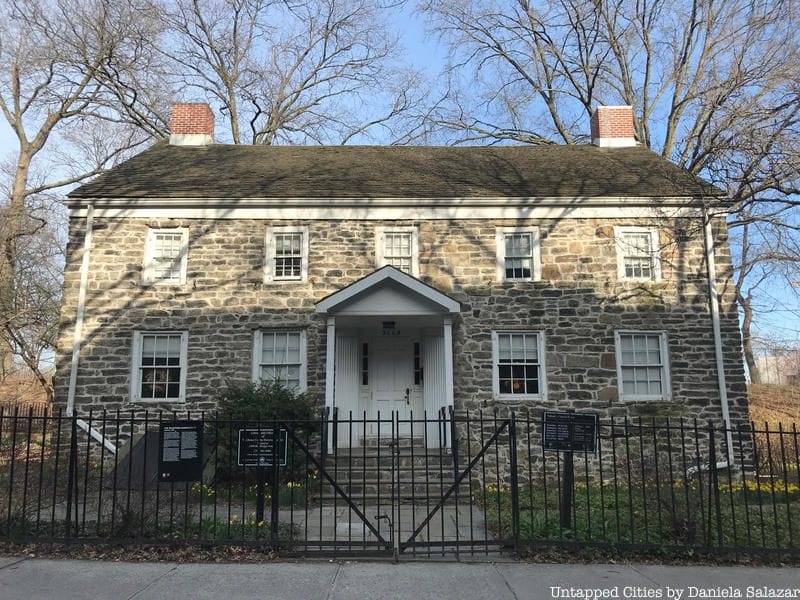
The Valentine-Varian House is the second oldest house in the Bronx and the oldest existing farmhouse. Built by Isaac Valentine, a wealthy blacksmith and farmer from Yonkers, the house has a rich history due to its position along the Boston Post Road, a witness to the rise of commerce in America as well as the advent of the Revolutionary War. It’s now a house museum run by the Historic House Trust. In 1965, it was moved down the street to its current site on Bainbridge Avenue and restored it.
When visiting, make sure to keep an eye out for the Bronx River Soldier sculpture in front of the house which was made for Woodlawn Cemetery but ended up at the bottom of the Bronx River.
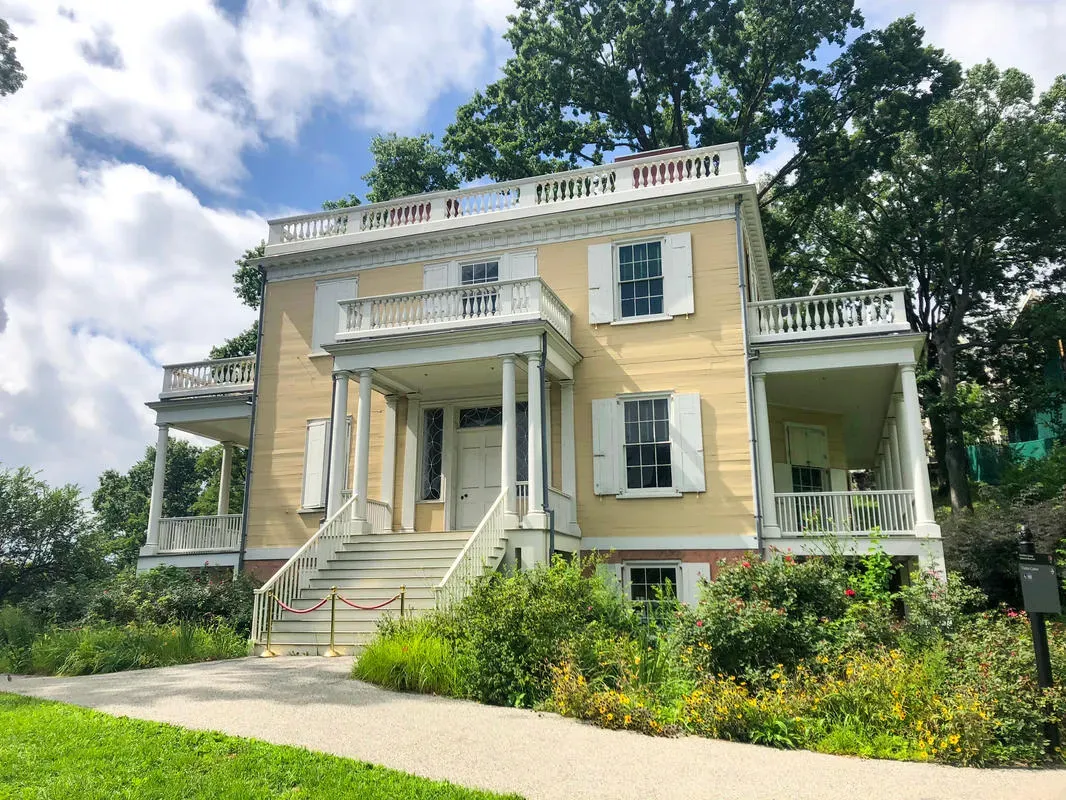
Hamilton Grange was constructed in 1802 and designed by John McComb Jr. in the Federal style. It was built for Alexander Hamilton, who served as the first Secretary of the Treasury. Sadly, he only lived in the house for two years before being killed as a result of a duel with Aaron Burr. Hamilton Grange, which was named after his grandfather’s estate in Scotland, was moved in 1899 to Convent Avenue in order to stave off its destruction. Between 2006 and 2011, Hamilton Grange was moved again to St. Nicholas Park, in order to restore the house and provide a setting more in tune with its original location. Hamilton Grange National Memorial is owned and operated by the National Parks Service.
Written by Michelle Young and Benjamin Waldman
Subscribe to our newsletter